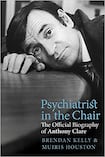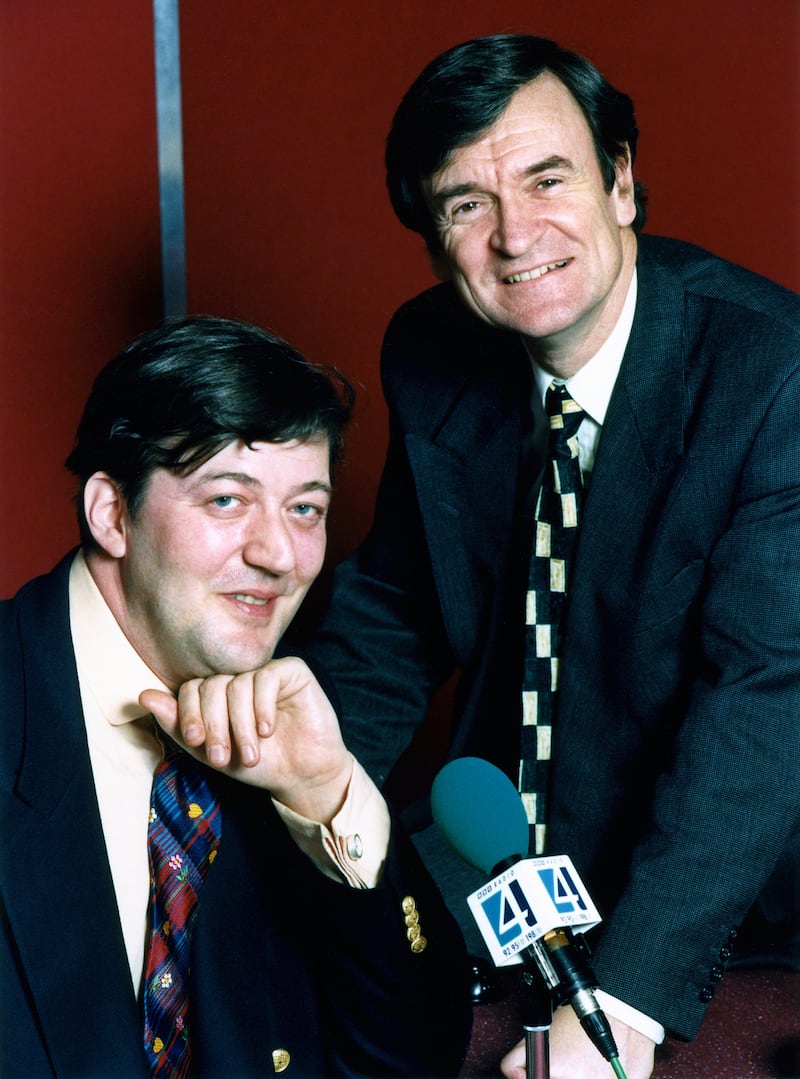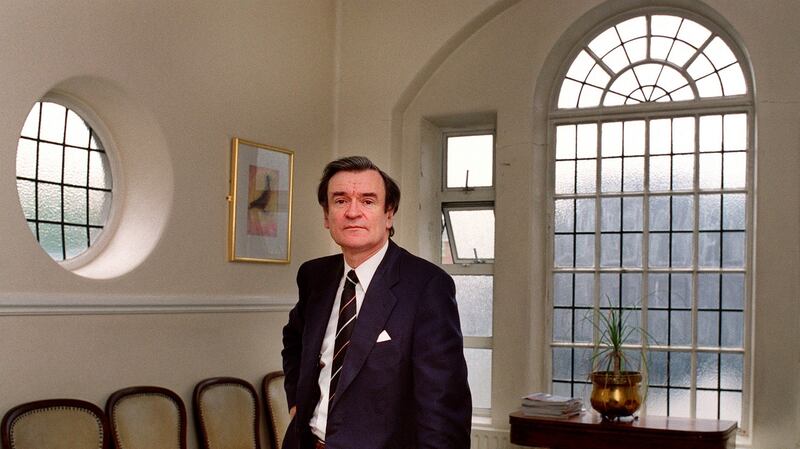
When the high walls around St Dympna’s Psychiatric Hospital in Carlow were pulled down in the early 1960s, locals were uneasy. The hospital was only a few hundred yards from St Leo’s, my boarding school, and I remember fearful chatter among the girls about “mad people”.
Little by little as we passed the lowered walls on our Sunday walks and saw people out enjoying the green lawns and the sunshine, just like us, we began to relax. Some, like me, were to find out how easy it is to become mentally ill and how important it is to meet with compassion and acceptance, not to be locked away.
Dr Bertram Blake, medical director of St Dympna’s, was the man who pulled down the walls and he is one of many psychiatrists who put humanity back into the treatment of mental illness. Dr Anthony Clare was another.
The sort of psychiatric hospital regime portrayed in the film One Flew Over the Cuckoo’s Nest – people being locked away without good reason, harsh treatment by staff, brutal lobotomy, using electroconvulsive therapy as a punishment – was tackled by Clare in a review of the film for the Lancet.
However, the greater danger, he argued, was the absolute belief by some practitioners of psychiatry that their own authority and power were incorruptible. For Clare, a winner of the Observer Mace debating prize, everything should be challenged and debated and he had no fear of that debate.
This official biography of Clare shows us the psychiatrist and researcher as well as the media star of BBC Radio 4’s In the Psychiatrist’s Chair. But the communication skills that made him such a star were used to defend his profession at a time when psychiatry was being questioned by psychiatrists themselves.
Some suggested there was no such thing as mental illness and that psychiatric treatment did more harm than good. These criticisms were addressed in the book Clare is best known for, Psychiatry in Dissent: Controversial Issues in Thought and Practice. It was published in 1976, only 10 years after he graduated, and it became a classic. Its themes still hold good today: that what we call “normality” and “madness” are not opposites but points on a continuum; that we should not separate too sharply mental and physical illness.

Convenient labels
He stressed the importance of diagnostic classification systems in protecting people from being labelled as mentally ill because society or politicians found that convenient. He addressed various issues of controversy, including involuntary psychiatric admission and ECT, which he said should only ever be used with anaesthetic and muscle relaxation.
Through his research and his media presence, Clare was becoming one of Britain’s best-known psychiatrists. By 1983, aged only 41, he had become professor and head of psychological medicine at St Bartholomew’s Hospital in London.
His areas of research were practical, often exploring the relationship between psychiatry and society. He did a study showing that the rate of schizophrenia in Irish emigrants in London was no worse than in the indigenous population, thereby dispelling the myth of the mad Irish.
Work that he did with Dr Rachel Jenkins at Barts advised against attributing higher rates of depression in women to their reproductive biology and pointed instead to the differences between men and women in areas such as occupation, education, and income.
As early as 1971 he had published a paper warning about the danger of addiction to benzodiaziapines, which were widely prescribed for anxiety and alcohol withdrawal. It would be four more years before the US Food and Drug Administration came to the same conclusion. All his life he campaigned for better training for psychiatrists and helped improve training both in the UK and Ireland.
Clare came from a middle-class Dublin background; his father was a solicitor. But his almost frantic drive and ambition, according to Jane, his wife of more than 40 years, came from his mother, who had left school at 14. “She so injected the instability and conditionality of her approval into his core that he was condemned to a life of performance-generated self-esteem. He essentially didn’t think much of himself.”
What a performance
Certainly instances of Clare the performer abound in the book: at the age of 14 in a Gonzaga College debate on the Suez crisis, pounding the table and declaring: “Nasser is without doubt an out-and-out scoundrel!”; in 1972 arriving in a velvet suit to address a new intake of very impressed young doctors at the Maudsley; after the airline had lost his luggage and slides, arriving jetlagged to address a conference in Sydney and, without a note, holding the audience spellbound.
However, the performance for which he is best known is In the Psychiatrist’s Chair, and to it he brought all he knew about the arts and philosophy and psychiatry and people.

Tellingly, he also brought to it all his focus. Interviewers know there is nothing more seductive than giving somebody your complete attention, listening all the time, particularly during the silences. And there is nothing more revealing than letting people talk about themselves for hours.
That’s what happened with In the Psychiatrist’s Chair, the book reveals. Sometimes more than two hours were recorded for a 40-minute programme. It meant interviewees didn’t have to be hurried along and, having hit their stride, they often revealed more than they, or anybody else, expected. So we had Spike Milligan on his depression; agony aunt Claire Rayner shedding tears over her unhappy childhood; and Bob Monkhouse breaking down after admitting that his mother had not spoken to him for 20 years.
Clare’s questions were short, probing but rarely confrontational. He did what both good psychiatrists and good interviewers do. He quoted the person’s own words back at them. His interview with Maya Angelou was my favourite. She talked about racism in American literature, and about the great black gift of music to the world. Indeed, the rhythm of her southern voice flowed just like music, and when she broke into song, Clare sat back. He knew how to listen.
Return to Ireland
His return to Ireland to be medical director of St Patrick’s Hospital and professor of clinical psychiatry at Trinity Dublin College brought disappointments. He failed to win a seat in the Seanad; an RTÉ television series on mental health was panned. Was he always someone who worked better on a bigger stage, as the book suggests? Or is it, as I suspect, that we are very proud of Irish people who do well abroad but wish they’d stay there so there’s less competition for the rest of us?
There are some gaps here. Clare had little time for psychoanalysis, or for Freud, but what did he think about Jung? And why was he so dismissive of psychotherapy, which, when practised by those who are properly accredited and supervised, has helped so many people? Maybe this is the difficulty of the posthumous biography. We can’t ask him.
What the book does, admirably, is give a truer picture of the man the tabloids dubbed Shrink to the Stars. Prof Jim Lucey, one of his successors at St Patrick’s and someone equally devoted to a compassionate treatment of mental illness, called Clare a “social psychiatrist”. Or, as the authors of this book put it, he was concerned with people – understanding the realities of their suffering and how it affected their lives. He wasn’t afraid to let his own vulnerabilities help him understand theirs.
As for his media success, the treatment of mental illness is always the forgotten child of the health service. If Clare gave it a higher profile and made it a more attractive choice for the brightest students, well, why should anybody complain?

















